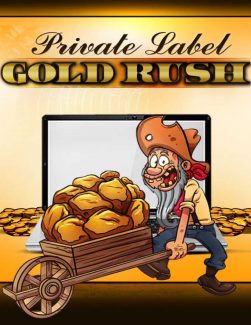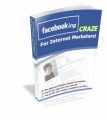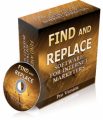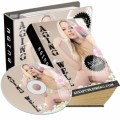
 License Type: Private Label Rights
License Type: Private Label Rights  File Type: ZIP
File Type: ZIP
 SKU: 59996
SKU: 59996  Shipping: Online Download
Shipping: Online Download
Ebook Sample Content Preview:
Introduction
You’re most likely reading this e-book because you’re looking for a simple and actionable strategy for making money with private labeling on Amazon.
Maybe you’ve already had some success selling on Amazon before and you’d like to expand into private labeling, so you can increase your ROI.
Or maybe you’re brand new to selling online, and heard somewhere how lucrative private labeling can be.
Either way, you made a wise decision purchasing a copy of this e-book and it will help you greatly!
Regardless of your experience and where you’re currently at in your online marketing career, this e-book will show you one of the easiest methods for breaking into private labeling and turning it into a full-time income
Here’s what you’re going to learn:
1. How to find the most lucrative target market for your product.
2. How to easily find and choose the perfect product to offer customers.
3. How to make sure a product will be profitable.
4. How to dominate your niche and earn big bucks from it month after month.
5. How to make your product stand out from the competition.
6. How to easily find a reputable supplier for your private label product.
7. How to scale this model into a long-term self-sustaining business.
Sound good? Great! We’ll get started in just a minute. But first, if you’re new to private labeling and/or Amazon FBA, here’s a brief introduction for both.
Note: If you’re already familiar with each, feel free to skip this section and move on to Step #1: Research Your Target Market
What is Private Labeling?
Private label products are product (or services) sold by one company but created by another company. They cover a wide range of consumer goods and services – from web hosting, books, software and consumer goods. The list is virtually endless.
You see private labeling in practice every time you visit a grocery store. For instance, Kroger sells its own name brand products (usually at discounted prices). But Kroger doesn’t manufacturer these products. The company purchases the products from smaller manufacturers and sells them as its own.
For you, private labeling will mean finding a specific, in-demand product, finding a supplier for that specific product, and selling it as your own product with your logo and branding.
(If you’re in the dark at the moment, don’t worry… we’ll cover it all in this e-book.)
What is Amazon FBA?
Amazon FBA stands for ‘Fulfilled by Amazon.’ It’s a program created by Amazon that allows merchants who sell products through its website to ship their products in bulk to one of Amazon’s many fulfillment centers located across the country.
This saves you time from having to manually manage your product inventory and ship out each individual product as it is sold. You send your products to one of Amazon’s designated facilities and they’ll handle the fulfillment of the products for you, which is a HUGE time-saver.
One other primary advantage of Amazon’s FBA program is that all Amazon Prime customers will be able to receive free shipping on any products they order from you.
While we don’t go too in-depth on Amazon FBA in this e-book, I will share with you a couple of resources throughout that will give you everything you need to get your account set up and operational.
Now that you’re up to speed on private labeling and Amazon FBA, it’s time to show you how to capitalize on this incredible income machine in the simplest and easiest manner possible.
Let’s get started!
Step #1: Find And Research Your Target Market
There are typically three criteria people use when trying to find a product to sell on Amazon:
1. Use Amazon’s Best Sellers List to find products to
2. Only offer low-priced products that customers tend to buy on impulse ($10 generally being the minimum)
3. Only offer products in the most popular niches.
All three of the above suggestions couldn’t be more wrong. And they’re the reason why so many people get frustrated and give
Let’s address each before we move
1) Use Amazon’s Best Sellers List to find products to sell.
Do this only if you want to target products that are oversaturated and extremely difficult to compete with.
While you can still want to use the Best Sellers List as a starting point for your research, you want to be sure to drill down much deeper into sub-categories to find less competitive money-making products.
In my opinion, it’s best to choose products with an Amazon Best Sellers Rank of 500 – 5,000. You may even want to go a little higher up to around 10,000.
2) Only offer low-priced, “impulse” products.
The myth behind this claim is that the lower the price of the product, the more likely a consumer is going to purchase it without giving it any real thought. As a result, you’ll sell more units and make more money.
While lower-priced products are bought more often on impulse, that doesn’t mean they’re the most profitable. There’s a thing called profit margin that comes into play that many people don’t grasp. More expensive products can be just as lucrative (if not more lucrative) than those smaller ticket products.
3) Only offer products in the most popular niches.
This is just flat-out bad advice. Any product category on Amazon, as long as it’s not restricted or prohibited to FBA sellers, can be profitable. It’s been proven time and time again.
The question remains…
How should you go about the process of finding a market to target and a product to offer within that market?
It all starts with asking your self a series of questions…
Remember: The following questions are meant to generate potential market and product ideas only. You’re not making a selection, yet. Make sure you jot down all of your answers and any ideas that come to mind throughout this process.
I recommend starting a journal that will contain everything your produce from using this e-book. Label it ‘My Private Label Gold Rush Journal’.
Question #1: What are my passions in life?
The online marketing community is split on this one. Some say you must follow your passion, and others say it doesn’t matter.
I think both sides are correct to a degree when it comes to actual marketing. Just because you’re not passionate about something, doesn’t automatically mean you shouldn’t market it.
But in terms of product idea generation, listing your life’s passions is almost always the best place to start.
So what are your biggest passions? What are your most favorite hobbies? What gets you excited? What keeps you up at night thinking about it?
Write down your passions. As you do so, write down any potential product ideas that come to mind. There’s no time limit. Write until the ideas stop flowing.
Question #2: What can I build a successful brand around?
Now forget about your passions for a minute. Instead, turn your attention towards markets that you could see yourself building a brand around.
Which niches could you see yourself being an authority in? Which niches are other lesser known brands selling in? Which niches might you already be knowledgeable in?
Again, write down any markets and accompanying products that come to mind.
Question #3: What are my friends and family already buying on Amazon?
What have you bought from Amazon in the last month? What have your friends bought? Your family? Your coworkers and acquaintances?
If you don’t know, then ask them. Let them know your plans to start a private label business and that their input will be immensely valuable. Most people will not have a problem telling you what they’ve purchased recently and this Intel can be extremely valuable.
- License: Private Label Rights
- Category:Ebooks
- Tags:2017 Ebooks Private Label Rights







